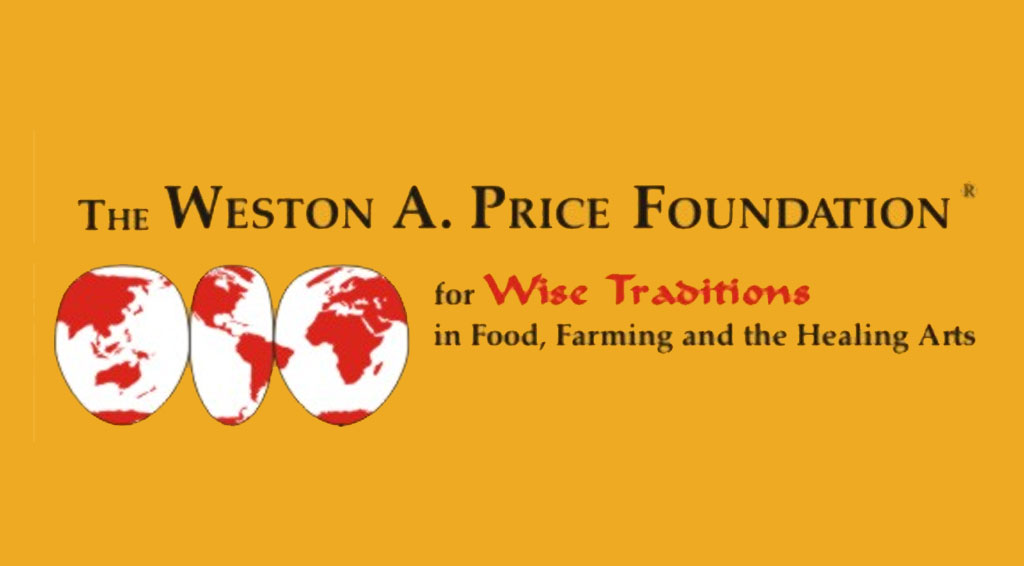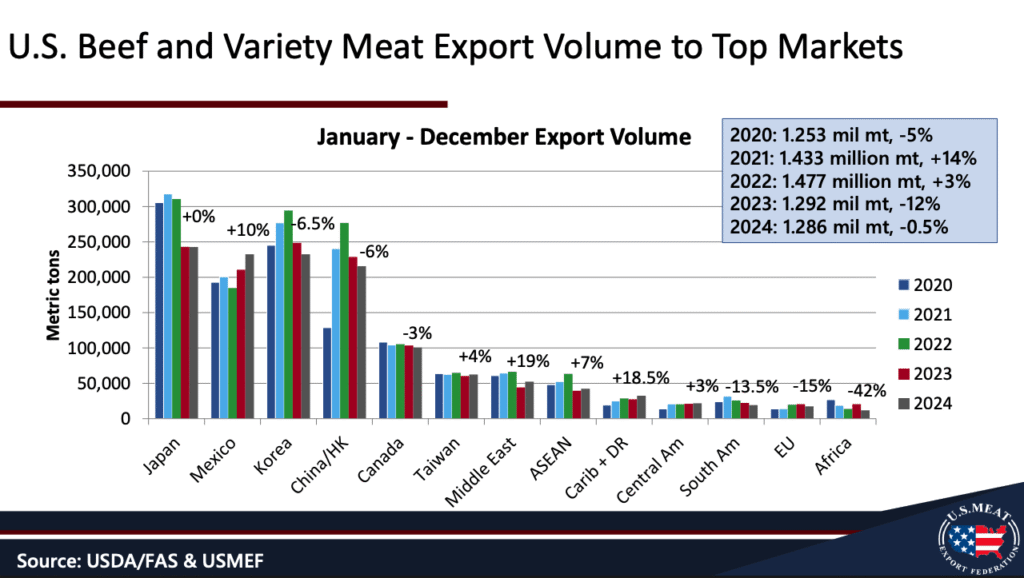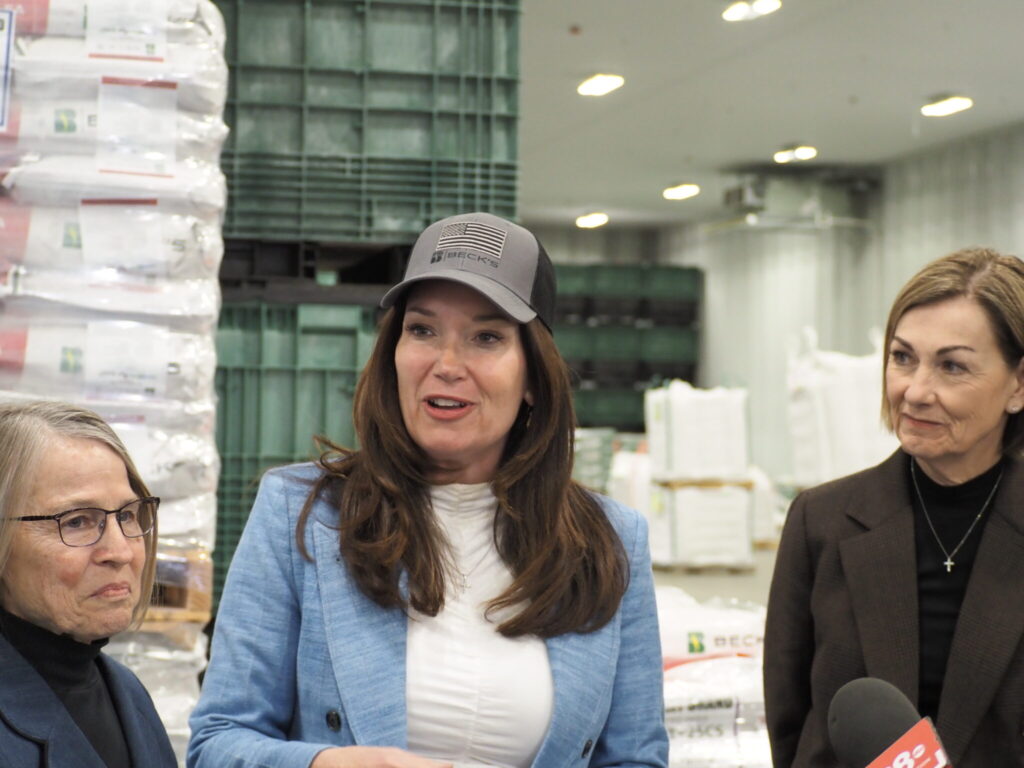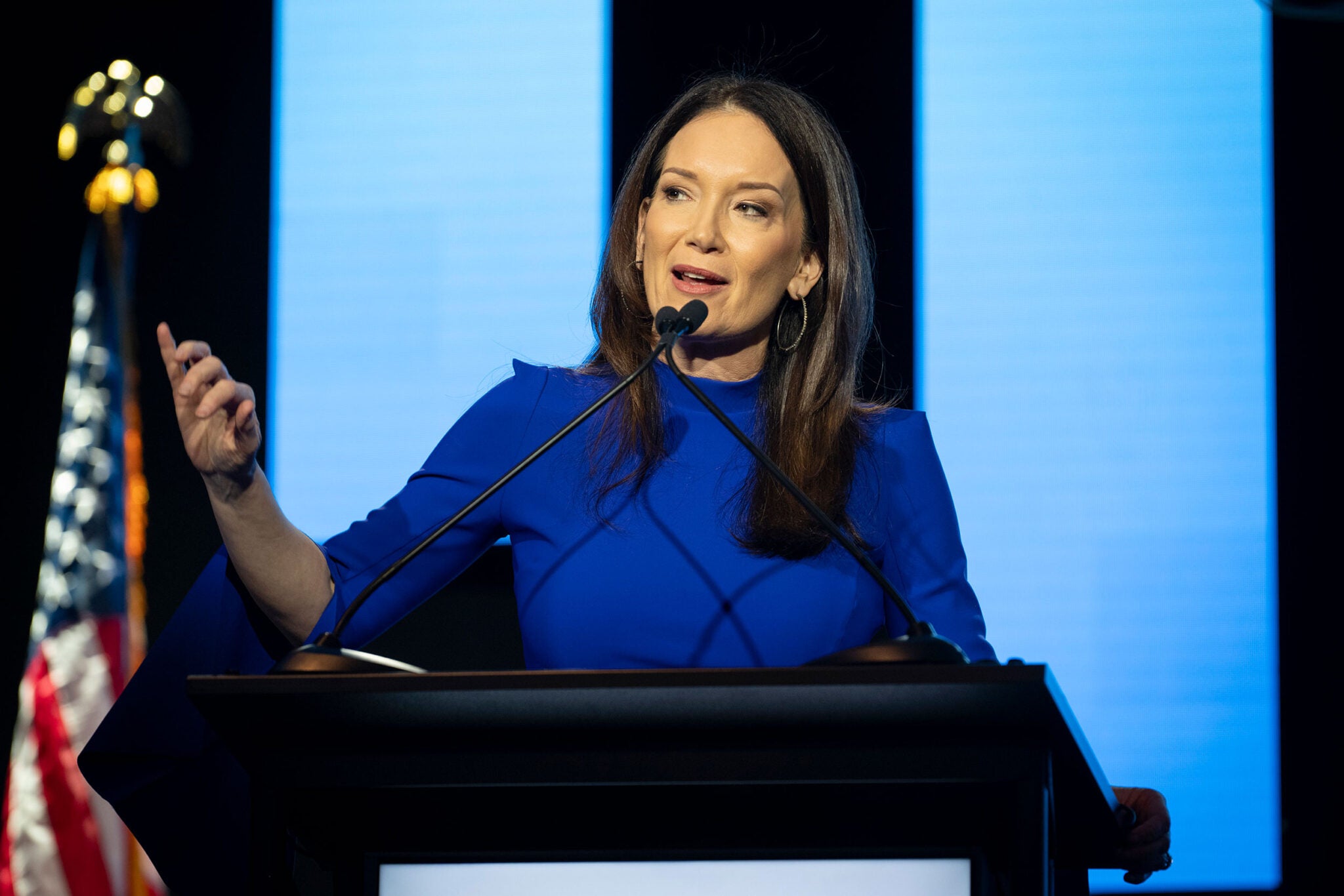In January 2024, the United States announced a headline-grabbing agriculture agreement with Taiwan: a $10 billion pledge over five years to ramp up U.S. exports and counter China’s growing influence in the Indo-Pacific.
On paper, it worked. Taiwan is now America’s 7th largest agricultural buyer, importing $3.8 billion in U.S. ag goods in 2024 alone, per the Foreign Agricultural Service.
But behind the photo ops, a harder truth hides in plain sight: independent U.S. cattle producers were shut out, while the Big Four beef packers skimmed international premiums—and USDA policies ensured they kept doing it.

Beef Is the Crown Jewel—But Not for the Rancher

According to USDA data, Taiwan imported 62,503 metric tons of U.S. beef in 2024, worth $709.6 million, a 13% year-over-year value spike and a dominant 52% market share—beating both Australia and Paraguay.
USDA’s Taiwan trade summary confirms these numbers, echoed by the U.S. Meat Export Federation, which noted it was the second-highest annual export total on record.

Taiwan pays a premium for U.S. beef—15–20% more for chilled, hormone-free cuts like ribeye and short ribs, according to this USMEF market bulletin. These premiums should boost rancher profits. But they don’t.
Why? Because packers—not producers—control the supply chain, from export certification to carcass fabrication. And the USDA has made sure it stays that way.
No Labels. No Sovereignty. Just Exports.
Under current USDA and FSIS policy, beef exported to Taiwan must meet a set of strict traceability and origin requirements—but only for the Taiwanese government, not for American consumers.
To ship beef to Taiwan, processors must comply with APHIS traceability protocols and FSIS export certification rules, ensuring that products are hormone-free, disease-free, and properly processed. Yet none of these guarantees apply at home.
U.S. consumers still have no mandatory country-of-origin labeling (MCOOL), meaning that the same plants exporting premium U.S. beef to Taiwan can sell mystery-blended meat to Americans without consequence.

A 2025 traceability update confirms this imbalance:
USDA now offers free RFID tags for cattle, but post‑processing audits at blended plants remain opaque and prone to fraud, echoing Uruguay’s ghost cattle scandal and Mexico’s smuggled herds—only 12% of sites maintain full trace‑back data, a figure inferred from public reporting gaps.
This export/import double standard doesn’t just violate transparency. It creates a structural incentive to prioritize high-paying export contracts over domestic fairness.
Meanwhile, the Herd Collapses

While Taiwan paid top dollar for U.S. beef, the American cattle herd shrank to a 75-year low.
According to the NASS January 2025 report, total U.S. cattle inventory fell to 86.7 million head, down 1% from the previous year and 17% below 2017 levels. Even the NASS July update, which showed a seasonal uptick to 94.2 million head, couldn’t mask the contraction.

The reasons? A lethal combination of high input costs, packer monopsony, and USDA exclusionary policy.
The USDA Gave Out $13.5 Billion. Not a Cent Went to Beef Producers.

In 2025, Secretary of Agriculture Brooke Rollins rolled out a sweeping relief initiative—combining the Emergency Commodity Assistance Program (ECAP) and the Supplemental Disaster Relief Program (SDRP)—distributing over $13.5 billion to over 900,000 producers affected by drought and inflation.
And yet, beef producers were categorically excluded.
FSA documentation shows that ECAP’s $8B allocation went to corn, soy, wheat, and rice producers—explicitly omitting cattle. The May 2025 roundtable announcing the program made no mention of ranchers.
Even Secretary Rollins’ Ag Outlook speech confirmed it: while celebrating the ECAP rollout, she declared that “no direct payments will be made to beef producers,” claiming subsidies distort markets.
That logic didn’t apply to grains, where billions flowed.
Beef Bailouts Blocked While Cartels Cash In

USDA funneled $13.5 billion in inflation relief to nearly every sector—except beef. Meanwhile, Big Four packers raked in 15–20% processing spreads, per ERS 2024 margins.
The result? A two-tier economy: export premiums for packers, bankruptcy risk for ranchers.
The Margins Tell the Story
As cattle inventory fell, the Big Four kept winning. According to CME live cattle futures, prices rose +2.1% in September 2025, hitting 231.15¢/lb on the October contract. Texas cash prices averaged ~$1.85/cwt for feeders, per TAMU’s September market report.
But that value disappears between the gate and the plate. USDA ERS research shows packer spreads as high as 20%, thanks to a supply chain the top four firms control 85% of.
This isn’t free-market capitalism. It’s legalized skimming.
What Did Taiwan Actually Buy?

Export volumes alone don’t justify a $10 billion commitment. The real value lies in preferred access—not just to corn and soy, but to clean, traceable, high-margin beef.
What Taiwan got:
- Premium beef with USDA-certified origin and traceability
- Custom processing via compliant export facilities
- Exclusion of lower-grade competitors (e.g., Brazil, India)
What American consumers got:
- Blended mystery meat with no label
- A 17% drop in ranchers since 2017
- No financial relief
Taiwan isn’t to blame. But this deal was structured to benefit processors and exporters—not producers or the American public.
Sovereignty for Sale
In the fog of geopolitics, Taiwan’s ag deal was pitched as a win for American farmers. The data tells a different story. The packers exported premium beef, the USDA subsidized everyone but ranchers, and the public still can’t read a label.
If the U.S. government can trace every steak to Taipei but not to Tulsa, who really runs our beef supply?
Support real American ranchers selling premium beef right here at home.




0 Comments